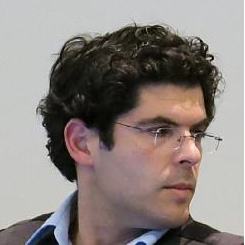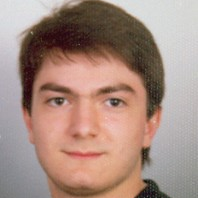Advancement of Remote Sensing and UAS in Cartography and Visualisation
A special issue of Remote Sensing (ISSN 2072-4292). This special issue belongs to the section "Remote Sensing Image Processing".
Deadline for manuscript submissions: closed (4 February 2024) | Viewed by 7224
Special Issue Editors
Interests: cartography; geoinformatics; 3D visualization; UAS in geovisualization; spatiotemporal mapping; AR-VR visualizations
Special Issues, Collections and Topics in MDPI journals
Interests: remote sensing for cultural heritage; optical image processing analysis
Special Issues, Collections and Topics in MDPI journals
Interests: remote sensing for coastal studies; beach-dune morphodynamics; nearshore hydrodynamics; UAV for marine litter mapping marine geology; environmental hydraulics; coastal engineering; sediments
Special Issues, Collections and Topics in MDPI journals
Interests: image analysis; image matching; multi-view reconstruction; laser scanning; point cloud classification; monitoring
Special Issues, Collections and Topics in MDPI journals
Special Issue Information
Dear Colleagues,
New technologies in the field of remote sensing that emerged in the 21st century and the advent of Unmanned Aerial Systems in data acquisition changed the mapping process and reshaped visualisation products.
Remote sensing using UAS-miniaturised sensors offers a unique opportunity to measure, analyse, quantify, map, and explore phenomena at high temporal frequencies, high ground resolutions, and different wavelengths.
Undoubtedly, high-resolution remote sensing data contribute significantly to the cartographic and visualisation processes of spatiotemporal geo-information. When applied to UAS-acquired, scale-variant data, new visualisation methods could substantially support the identification and visualisation of new patterns, potential relationships related to the spatiotemporal trends of various phenomena, and the extraction of geo-information.
This Special Issue on “Advancement of Remote Sensing and UAS in Cartography and Visualisation” specifically aims to address successful remote sensing and/or UAS applications, methodologies, and concepts related to mapping/visualisation in 2D and 3D.
We welcome innovative and high-quality research articles related to current trends and challenges on multidisciplinary domains, with emphasis on the field of geo-visualisation in 2D and 3D. Comprehensive and systematic literature review articles in the field are also welcome.
Authors are encouraged to submit articles on, but not limited to, the following subjects:
- UAS in Cartographic 2-3D geovisualisation applications;
- UAS remote sensing for scale-variant visualisations;
- Assessment of emerged phenomena using UAS remote sensing;
- Monitoring and mapping changes;
- Mapping spatiotemporal phenomena;
- Visualisation of environmental phenomena using UAS remote sensing;
- UAS and remote sensing applications in archaeology and cultural heritage;
- UAS high-resolution remote sensing data in AR/VR visualisations;
- UAS for coastal geomorphology and beach dune morphodynamics;
- Visualisation and damage assessment using UAS data;
- Mapping and quantification of emerging environmental phenomena;
- UAS data acquisition processes for visualisation applications;
- Geovisualisation applications in different fields (e.g., environment, geomorphology climate change, hydrology, geology, history, and archaeology);
- UAS applications for endangered sites;
- Trends of UAS for remote sensing applications;
- Infrastructure monitoring using UAS data;
- New optical and/or radar sensors for UAV.
Dr. Apostolos Papakonstantinou
Dr. Athos Agapiou
Dr. Umberto Andriolo
Dr. Mattia Previtali
Guest Editors
Manuscript Submission Information
Manuscripts should be submitted online at www.mdpi.com by registering and logging in to this website. Once you are registered, click here to go to the submission form. Manuscripts can be submitted until the deadline. All submissions that pass pre-check are peer-reviewed. Accepted papers will be published continuously in the journal (as soon as accepted) and will be listed together on the special issue website. Research articles, review articles as well as short communications are invited. For planned papers, a title and short abstract (about 100 words) can be sent to the Editorial Office for announcement on this website.
Submitted manuscripts should not have been published previously, nor be under consideration for publication elsewhere (except conference proceedings papers). All manuscripts are thoroughly refereed through a single-blind peer-review process. A guide for authors and other relevant information for submission of manuscripts is available on the Instructions for Authors page. Remote Sensing is an international peer-reviewed open access semimonthly journal published by MDPI.
Please visit the Instructions for Authors page before submitting a manuscript. The Article Processing Charge (APC) for publication in this open access journal is 2700 CHF (Swiss Francs). Submitted papers should be well formatted and use good English. Authors may use MDPI's English editing service prior to publication or during author revisions.
Keywords
- UAS remote sensing
- 2D/3D visualisations
- very-high-resolution image processing
- UAS and geoinformation
- UAS trends
- drone for coastal studies
- geovisualisation
- photogrammetry








